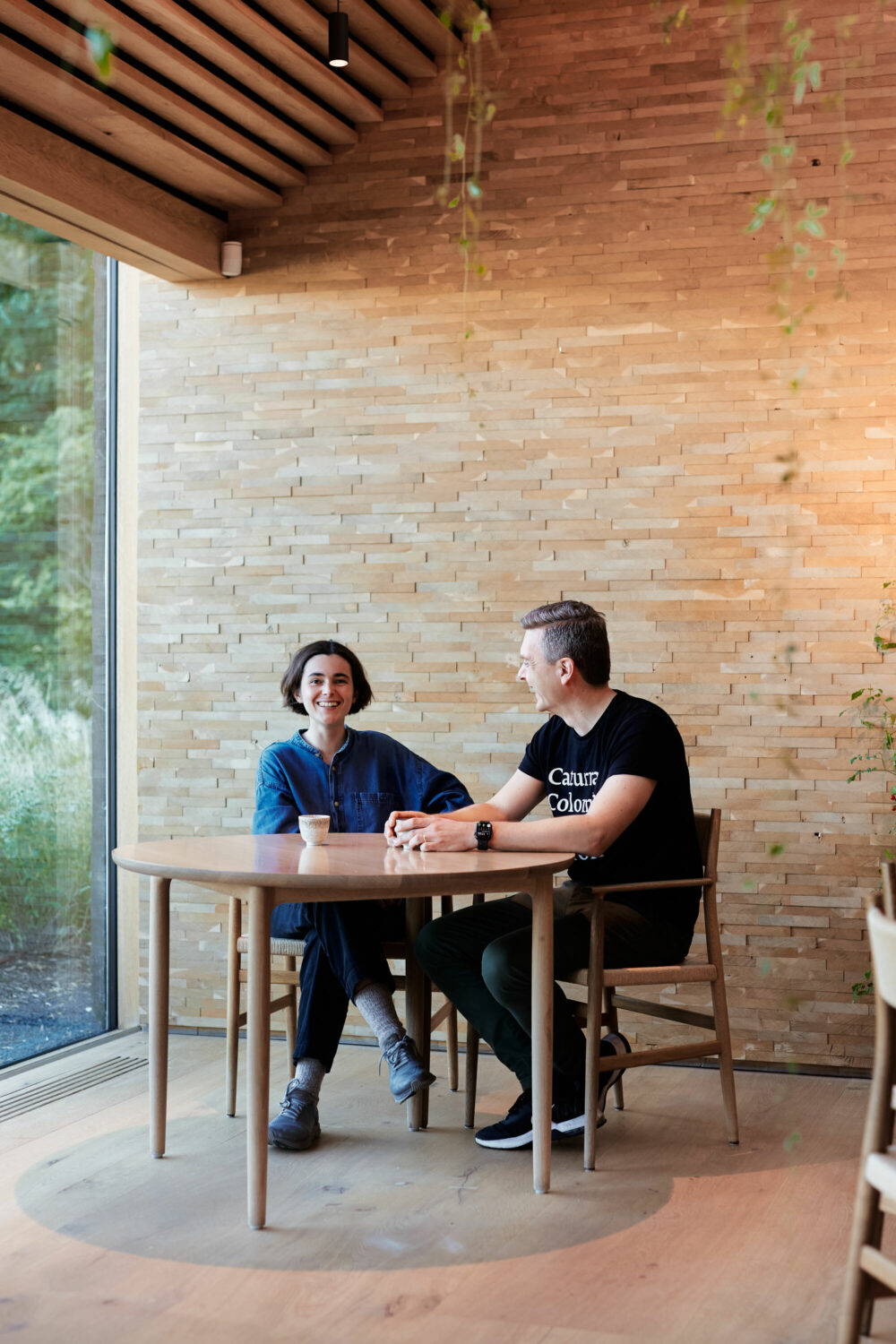The Anti-Theatre of Noma’s Coffee Service
By James HansenA whole langoustine dissected and laid out flat, as if prepped by a lepidopterist. A vacuum-distilled clam vinegar that preserves their flavour, but removes the allergens that trigger shellfish reactions. Kelp simmered three times in a broth of aronia juice, dried mushrooms, and quince tea, transforms into something resembling a fruit leather.
Then: a cup of black coffee.
That succession of dishes and drinks is a possible dining experience at Noma in Copenhagen — one of the most famous restaurants in the world, where just like at any other, the possibilities for creativity are endless until you get to the after-dinner cup. Even the deliberate treating of coffee as an ingredient, something with multiplicity of flavour, can’t get beyond the basic fact that no matter how you treat it, the end result will be some composite of water and coffee.
That’s not to say that the restaurant isn’t thoughtful about its coffee service.
Noma has a longstanding relationship with Norwegian roaster Tim Wendelboe, who is widely considered one of the godfathers of the so-called “Nordic” style of roasting coffee (doing so lightly, in order to emphasise the origin characteristics of the beans.) Watch a video of the restaurant’s coffee service from 2013, or indeed a 2012 coffee conference in which chef-founder René Redzepi calls it “the shit,” and you’ll see the things you might expect from a coffee service at a restaurant in Noma’s galaxy: Individual filters; carefully poured water; the possibility for tableside engagement. Essentially, a modern speciality café pour over service, miniaturised and transplanted to a new context crying out for it
Except, it’s not that simple, and that’s why Wendelboe and Carolyne Lane, who runs the restaurant’s tea and coffee program, set out to change things.
Brewing excellent coffee is a tough enough assignment for even well-regarded cafés opened for that express purpose. Brewing excellent coffee in synchronisation with the myriad moving parts of a restaurant, where it is fundamentally just one element of service, is tougher still. That’s before you get into the fact that while the coffee is acting as the appendix to a multi-course meal over which guests have little control, people’s preferences and predilections about something that they are used to having just how they want it on a daily basis are going to rear up no matter what.

Speaking on a podcast with Wendelboe last year, Lane said that the reasons for moving away from filter coffee (first pour over V60s, and then Aeropresses) are both aesthetic and practical. Doing coffee tableside falls into “making something more complicated for the sake of being impressive,” she said – a line that might rise eyebrows for anyone who has ever seen some of the dishes at Noma. But Lane also pointed to the fact that she’s “training someone to pour a litre of water the same way that I pour a litre of water.” How quick, how slow, in what direction? So creating consistency across staff with a huge range of coffee experience is ultimately very impractical, especially compared to a café where the coffee is the specialisation.
Noma put it to Wendelboe that they needed a new coffee service: one which was fast, repeatable, worked at volume, and emphasised the spectacular flavours of his coffees with an intensity that rudimentary filter coffee can’t quite deliver. He came up with what Onyx Coffee’s Lance Hedrick, now also a notable YouTube expert and personality, has dubbed the “Nomacano.”
In principle, it is a hybrid drink – made in an espresso machine for speed and ease of repetition (machines pour water more consistently than humans) – but able to be diluted to the strength of a filter. Wendelboe, whose flagship café in Oslo does not serve americanos, didn’t want to go down that road either, and neither did Lane: they agree that the dilution of true espresso doesn’t smooth its intensity so much as rag its edges.
Instead, Noma is now brewing the same recipe, every time, for anyone who orders a coffee, with two crucial details. The brewed coffee is filtered through a V60 pour over with a paper filter, to remove crema and coffee microparticles, and an Aeropress filter is placed in the bottom of the espresso machine’s basket, which removes further microparticles and also increases the extraction of oils and flavour from the coffee.
The recipe is 23g ground espresso, with a yield of 180g of coffee from the machine. That gets diluted with a slightly variable amount of water – more for coffees that major on delicate fruits and florals, less for those with more intense, robust character – and is portioned such that one “shot” yields around three-to-four servings of coffee for three or four guests at a time.
A neat, if unintentioned callback to Noma’s coffee history, whose efficiency, anti-theatre and focus on flavour now make it the perfect ending.
Header image courtesy of Noma.